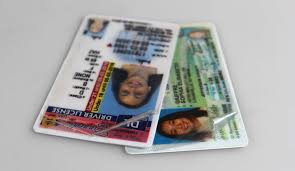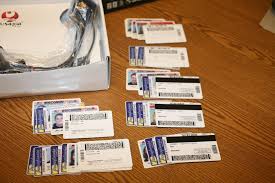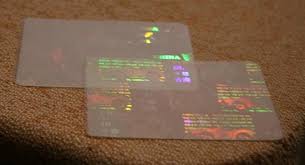Unique Driver’s License Features
Introduction: A New Era for the Driver's License
The driver’s license has long been a key element of personal identification in many countries, primarily serving as a permit to operate vehicles. However, in an age where technology is advancing at an unprecedented rate, the once-simple driver’s license is undergoing a radical transformation. Today, we are witnessing the integration of cutting-edge technologies that bring new dimensions to this essential document. These unique features not only enhance security but also introduce new forms of convenience and identity management for drivers worldwide.
This article explores the most innovative features and technological advancements found in modern driver’s licenses, focusing on how these new functionalities provide enhanced security, increased convenience, and improved efficiency for both drivers and authorities.
The Evolution of the Driver’s License
The driver’s license has evolved significantly since its inception. From the paper-based documents in the early 20th century to the sophisticated, tech-powered versions of today, the progression has been largely driven by the need to balance security, accessibility, and usability.
From Paper to Plastic: The First Technological Leap
In the 1960s, most driver’s licenses were printed on paper or card stock. The introduction of laminated plastic cards in the 1980s marked a significant milestone. These plastic cards offered a more durable and tamper-resistant option, with improved features such as holograms and barcodes. Despite the improvements, the focus was primarily on physical security, and little attention was paid to digital capabilities.
The Rise of Smart Technologies: Digital and Biometric Features
In the 2000s, countries began experimenting with adding more digital and biometric security features to driver’s licenses. The introduction of RFID chips, digital photos, and fingerprint scanning ushered in a new era of digital identification. These features enhanced the driver’s license's ability to verify a person’s identity more efficiently and securely.
Today, modern driver’s licenses are integrating a host of features that are reshaping how we think about identification and mobility.
Key Features of the Modern Driver’s License
1. Integrated Digital and Physical Formats
One of the most significant advancements in modern driver’s licenses is the shift toward integration of both physical and digital formats. The digital driver’s license (DDL) is a growing trend across the globe. These licenses are stored on smartphones or other mobile devices through secure apps, allowing individuals to carry their driver’s license electronically.
This seamless integration of digital and physical formats makes it easier for authorities to verify a person’s credentials in real-time, while also offering greater convenience to the driver. No more fumbling through your wallet to find your ID – with a digital version, your driver’s license is always at your fingertips.
2. Biometric Verification
Biometric technologies, including facial recognition, iris scanning, and fingerprint recognition, are becoming integral components of modern driver’s licenses. These technologies significantly improve the security of the license, making it nearly impossible to forge or alter. Furthermore, biometrics ensure that the license is issued only to the legitimate holder, thereby reducing identity theft and fraud.
With the use of biometrics, driver's licenses are moving beyond just a proof of driving ability to a more sophisticated form of personal identification that can be used across various industries.
3. Enhanced Security Features
As concerns about identity theft and fraud continue to rise, driver’s licenses have adopted cutting-edge security features. Some of these include:
- Holographic Images: These holograms are difficult to replicate, offering an additional layer of protection.
- QR Codes & Barcodes: QR codes and barcodes on modern driver’s licenses allow for quick and secure scanning of the information, providing authorities with instant access to the driver’s information.
- UV Markings: Under ultraviolet light, hidden patterns or text can be revealed, further deterring counterfeiting.
- Radio Frequency Identification (RFID): Some countries are now integrating RFID chips into driver’s licenses, allowing authorities to access information from a distance. These chips offer improved security and speed during verification processes.
4. Multi-Purpose Functionality
In addition to serving as a legal document for driving, modern driver’s licenses are also being designed to serve a broader range of functions. They can now be used as access cards for buildings, security checks, and even online authentication. This multi-functionality enhances convenience for users and reduces the need to carry multiple identification cards.
In some cases, driver’s licenses are also being linked to national health records, voting registration, and other critical public services, further streamlining daily tasks for citizens.
5. Smartphone Integration
With the rapid rise of smartphone adoption, many countries are beginning to embrace digital versions of the driver’s license via official apps. These apps not only store the driver’s license on a mobile device but also allow for real-time updates, notifications, and access to related services. This means that you can keep your driver's license up-to-date without needing to physically visit the licensing authority.
Moreover, some jurisdictions allow the use of these digital licenses for various activities, such as checking in at airports or using ride-sharing services.
The Benefits of Unique Driver’s License Features
Increased Security
With sophisticated biometric security, RFID chips, and encrypted data, modern driver’s licenses are far more difficult to forge or steal than their predecessors. The addition of multi-layered security features ensures that driver’s licenses can be trusted by both government agencies and individuals.
Enhanced Convenience
Drivers no longer need to carry a bulky wallet full of cards. With digital driver’s licenses and the ability to use smartphones for authentication, managing personal identification has never been easier. The added functionality of using a single ID for multiple purposes means fewer cards to carry and less risk of losing essential information.
Streamlined Identification and Verification
Gone are the days when you had to wait in long queues to have your license or ID verified. With the advent of digital and biometric technologies, verification can now be completed in seconds, both in-person and remotely. This makes everything from accessing government services to boarding a plane faster and more efficient.
Global Mobility
As countries around the world increasingly adopt digital licenses, we may see more universal standards that will make it easier for people to drive across borders. With enhanced security and digital features, driver’s licenses could eventually serve as a globally accepted form of identification, reducing the need for separate documents when traveling.
Market Analysis: The Demand for Innovation in Driver’s Licenses
The Global Trend Towards Digital Identification
The shift towards digital identities is becoming a global trend, with many countries already rolling out digital driver’s licenses as part of broader e-government initiatives. For example, Estonia has already introduced a digital ID system that includes driving privileges, while other countries like the United States, Canada, and Australia are slowly integrating digital driver’s licenses into their national infrastructure.
This trend is driven by a desire for increased security, convenience, and efficiency, with governments and businesses alike seeking solutions that can streamline identification and reduce fraud.
Consumer Expectations
Today’s consumers are increasingly tech-savvy and expect more from everyday products, including driver’s licenses. People are looking for faster, more efficient services, as well as enhanced security features that protect their personal data. Additionally, with mobile apps becoming an integral part of daily life, the ability to access driver’s licenses digitally aligns with broader consumer preferences.
Impact on Regulatory Agencies
The adoption of new technologies presents both challenges and opportunities for regulatory agencies. While the integration of advanced features can improve efficiency and reduce errors, it also requires significant investment in infrastructure, training, and policy updates. Governments must ensure that the rollout of new technologies is done responsibly, with privacy and data protection at the forefront.
Target Audience
1. Tech-Savvy Drivers
Young professionals and digital natives who are comfortable using mobile apps and digital services are likely to embrace the integration of driver’s licenses with smartphones and other digital platforms. These individuals value convenience, security, and innovation.
2. Government and Regulatory Agencies
Local, state, and national government bodies play a crucial role in implementing new driver’s license technologies. Agencies responsible for issuing driver’s licenses must stay ahead of technological advancements to ensure their systems are secure and user-friendly.
3. Security-Conscious Individuals
As identity theft and fraud continue to be significant concerns, those who prioritize security will appreciate the biometric and encryption features of modern driver’s licenses. The added protection against counterfeiting and fraud will appeal to a wide range of users.
4. Global Travelers
As more countries adopt international standards for driver’s licenses, the global traveler market will benefit from the convenience and security provided by smart, digital, and universally accepted driver’s licenses. Travelers who cross borders frequently may find these innovations particularly appealing.
Conclusion: The Future of Driving and Identification
The driver’s license of the future is much more than just a permit to drive—it’s a multifaceted identification tool that integrates seamlessly into our digital lives. With enhanced security features, greater convenience, and innovative functionalities, these unique driver’s license features are paving the way for a smarter, more secure future.
As the digital age continues to transform our lives, driver’s licenses will become more than just a symbol of driving ability—they will represent a new era of personal identification, mobility, and access. Whether you’re looking to streamline your daily routine or ensure that your identity is protected, the future of driver’s licenses is a promising and exciting journey.
 Indiana Fake ID
Indiana Fake ID
 Kansas Fake ID
Kansas Fake ID
 Maryland Fake ID
Maryland Fake ID
 Massachusetts Fake ID
Massachusetts Fake ID
 Realistic Arizona Fake ID
Realistic Arizona Fake ID
 Fake ID safety
Fake ID safety
 Illinois fake ID
Illinois fake ID
 fake ID trends
fake ID trends
